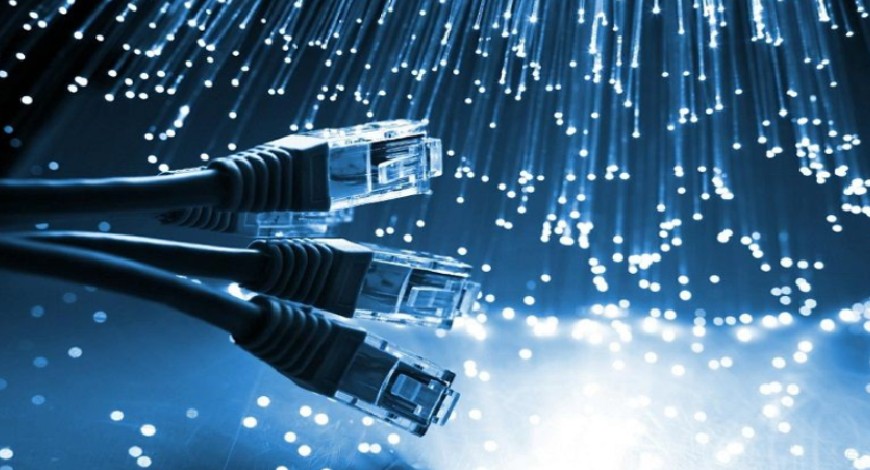Structured Cabling
Structured cabling market poised for a 5% increase

Structured cabling market is projected to reach USD 15.0 billion by 2027 from an estimated USD 11.7 billion in 2022, at a CAGR of 5.1% from 2022 to 2027. Major factors driving the growth of the market include growing trend of data center convergence penetrating IT infrastructure market, and rising emergency of smart cities, according to MarketsandMarkets.
COVID-19 Impact on the Global Structured Cabling Market. The COVID-19 pandemic negatively impacted the market in 2020 and 2021, resulting in a decline in the revenues for market players. As a result, a dip was witnessed in the growth trend of the market during 2020 and the first half of 2021. This decline is attributed to multiple factors, such as reduced revenue of the cabling industry, slow pace of production and lack of raw material suppliers, and shutdown of several plants in several countries due to the pandemic, the suspension of business activities, massive surges in internet traffic, and rapid growth in data storage and processing requirements. The demand for structured cabling products, software, and services is expected to surge with the rise in remote work scenarios that has increased the usage of secure endpoints, particularly cloud-based tools, log management, and VPNs.
Growing trend of data center convergence penetrating IT infrastructure market. The COVID-19 epidemic has had a significant influence on traditional workplace norms. With the uncertainty of the future of the office culture, all types of businesses have turned to contemporary IT solutions to keep their operations running, employees connected, and budgets under control.
The number of public clouds, as well as private cloud data centers, has been rapidly increasing. The significant increase in the number of internet users and the demand for personal cloud storage are a few of the driving factors for the growth of data centers worldwide.
According to the Cisco Global Cloud Index report, the global cloud data center traffic hit 19.5 zettabytes (ZB) per year by 2021, an increase of 6 ZB per year from 2016. Cloud data center traffic represents 95% of the total data center traffic in 2021, while 94% of workloads and compute instances are processed by cloud data centers in the same year. The rise of the Internet of Things (IoT) will naturally also contribute to greater traffic.
The concept of data center convergence is eventually penetrating the market for IT infrastructure, which helps consolidate independent servers, storage systems, and networking devices into an integrated system. Various companies have started abandoning disparate architectures to optimize their cost of operations. It also leads to increased productivity, improved flexibility, and simplified maintenance. Converged infrastructure is a single vendor design, which streamlines deployment, management, and support. A few of the data center trends include:
- Hyperscaler demand is driving colocation data center growth
- Data-driven monitoring
- Automation
- 5G
- Edge computing
Datacenter convergence is acting as a driving force for the structured cabling market as it requires fiber optic cabling to connect server racks and storage arrays. It helps in reducing cable pathways to ensure productivity while handling the increased density of the network. The use of high-density connectivity products such as patch panels and cabinets for complex and high-capacity cable management ensures the efficient performance of the system.
Poor EMC impedance tolerance of UTP cabling. Electromagnetic compatibility (EMC) is a system’s ability to minimize the effect of generated electromagnetic energy and resist unwanted noise interference from external sources. Electronic systems and cabling systems are equally responsible for the creation of noise and emissions in the network due to which all areas such as PCB designing, enclosure designing, connector technology, and power supply & interface cabling are taken into consideration to avoid electromagnetic interference (EMI) issues in the system.
The unshielded twisted pair (UTP) cable is preferred by cabling infrastructure providers and users as it is a more cost-effective solution. However, UTP cables show poor EMC impedance when compared to shielded/screened twisted pair (STP/ScTP) cabling. The ability of UTP cabling to support high-speed data applications still depends on various factors and parameters related to noise immunity and emissions. This technical limitation of UTP cable hinders the growth of market.
In 2022, the category 6 cable type is expected to hold the largest share in market. This cable is defined in TIA/EIA-568-B and provides significant improvements in performance over category 5 and category 5e. Category 6 cables can support speeds of up to 10 Gbps, provide bandwidth up to 250 MHz but can only do so for up to 55 meters, which makes them relatively long Ethernet cables. Category 6 also includes an extra plastic string core placed in the middle of the twisted internal wiring, which adds an extra layer of protection to diminish crosstalk.
The IT & telecommunications segment is anticipated to hold the largest share of market in 2027. The IT & telecommunications segment is anticipated to hold the largest share of market in 2027. An increase in the number of subscribers in the telecommunications sector who are demanding high-speed internet connection and trends and technologies such as 5G, artificial intelligence, and the Internet of Things are forcing the data center operators to evolve day by day.
CT Bureau














You must be logged in to post a comment Login